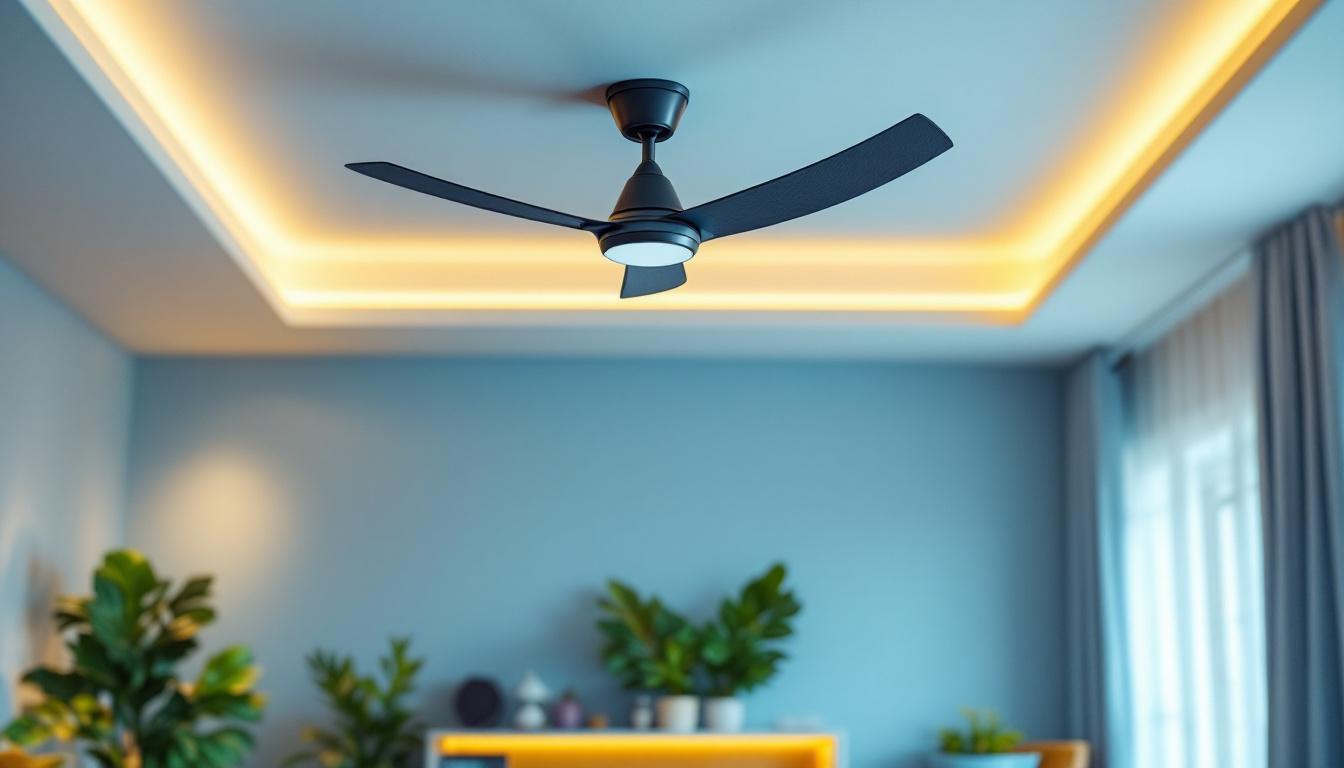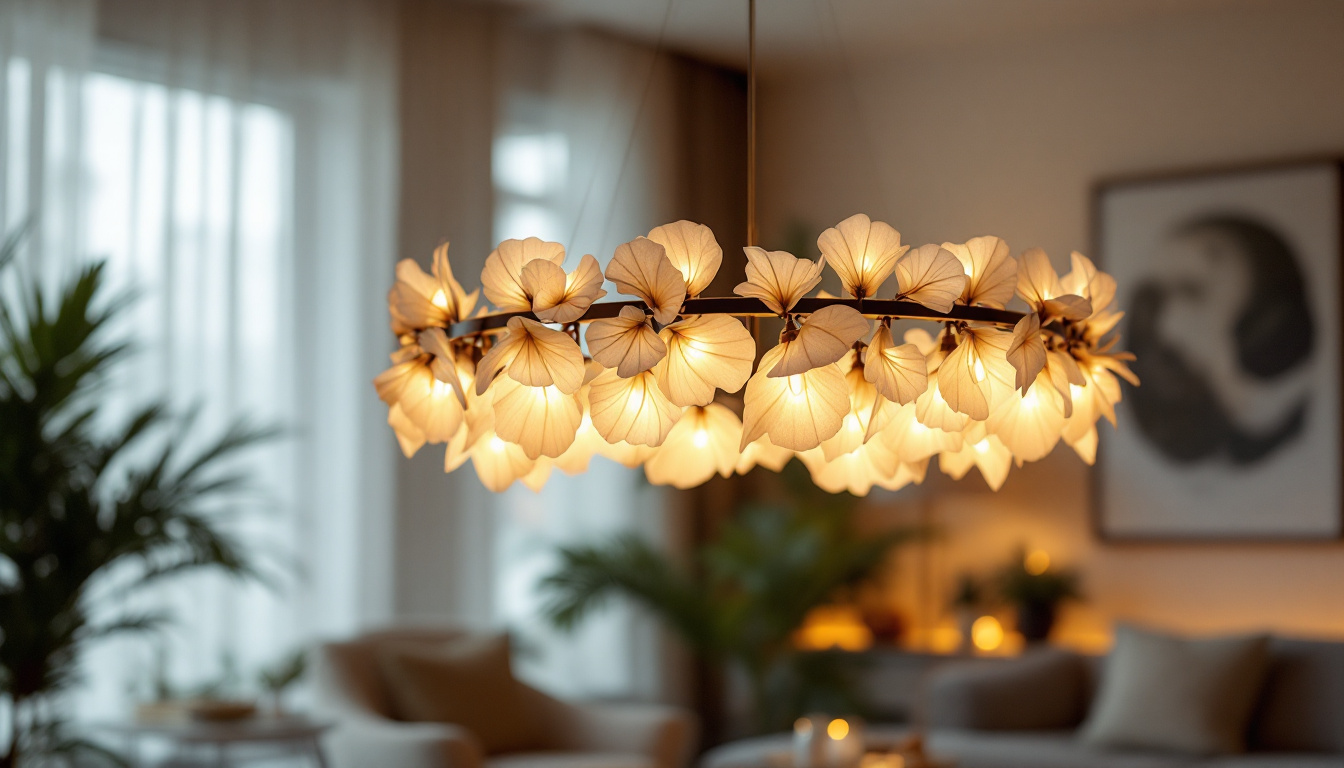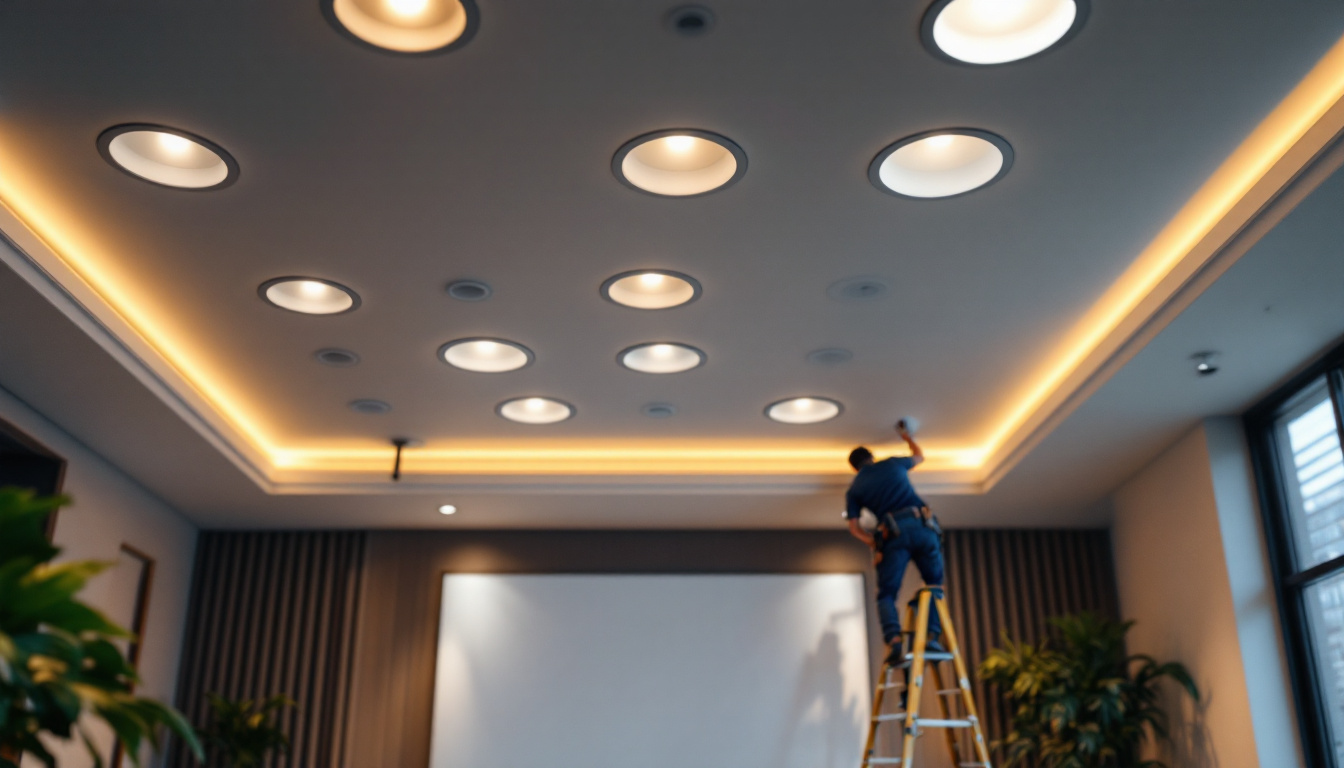
In the world of lighting design, the ceiling fan often takes a backseat to more glamorous fixtures like chandeliers and pendant lights. However, this unassuming appliance serves a critical role in enhancing both the functionality and aesthetic appeal of a space. For lighting contractors, understanding the importance of ceiling fans can elevate the quality of their projects and lead to greater client satisfaction.
Ceiling fans are not merely decorative elements; they contribute significantly to the overall ambiance and comfort of a room. By providing airflow, they can help regulate temperature, which in turn affects how lighting is perceived. A well-placed ceiling fan can create a more inviting atmosphere, making it an essential consideration in any lighting project.
One of the primary benefits of ceiling fans is their ability to enhance comfort. In warmer months, a ceiling fan can create a wind-chill effect, making a room feel cooler without the need for excessive air conditioning. This not only saves energy but also allows for the use of softer, more ambient lighting, which can create a cozy environment.
In colder months, many ceiling fans come with a reverse function that circulates warm air that has risen to the ceiling. This feature can reduce heating costs and improve the efficiency of a lighting design that relies on warm tones to create a welcoming space. Additionally, the gentle circulation of air can help to distribute light more evenly throughout the room, minimizing harsh shadows and enhancing the overall visual appeal of the space.
Ceiling fans can also serve as a complementary element to various lighting fixtures. When chosen thoughtfully, a ceiling fan can enhance the overall design aesthetic of a room. For instance, a modern ceiling fan with sleek lines can pair beautifully with contemporary pendant lights, while a rustic fan can harmonize with vintage-style fixtures.
Moreover, the integration of ceiling fans into a lighting scheme can help achieve a balanced look. By coordinating the styles, colors, and materials of both fans and lights, contractors can create a cohesive design that elevates the entire space. This attention to detail can also extend to the choice of light bulbs; for example, using warm LED bulbs in conjunction with a wooden fan can enhance the natural feel of a room, while cooler-toned bulbs might complement a more industrial fan design. The interplay of light and movement can create a dynamic atmosphere that adapts to the needs of the space throughout the day.
Furthermore, many modern ceiling fans come equipped with integrated lighting options, allowing for a seamless blend of function and style. These fans often feature dimmable LED lights, which can be adjusted to suit different activities, from bright illumination for reading to soft lighting for a relaxed evening. This versatility not only enhances the usability of the space but also encourages creativity in lighting design, as homeowners can experiment with different settings to find the perfect ambiance for any occasion.
When selecting a ceiling fan for a lighting project, it’s essential to consider the various types available. Each type serves different purposes and can complement different styles of lighting. Understanding these options can help contractors make informed decisions that align with their clients’ needs.
Standard ceiling fans are the most common type found in residential and commercial spaces. They typically feature a motor mounted to the ceiling with blades that rotate around it. These fans come in various sizes and styles, making them versatile for different room dimensions and decor themes.
In lighting projects, standard ceiling fans can be paired with flush mount or semi-flush mount fixtures, creating a seamless look that integrates both airflow and illumination. Their functionality and aesthetic appeal make them a popular choice among homeowners and designers alike.
Low-profile ceiling fans, also known as hugger fans, are designed for rooms with low ceilings. They sit closer to the ceiling and provide the same airflow benefits as standard fans without the risk of headroom obstruction. This makes them ideal for spaces like basements, bedrooms, or small living areas.
Contractors should consider low-profile fans when working on lighting projects in such spaces, as they can effectively enhance comfort without compromising on style. Pairing these fans with recessed lighting or wall sconces can create an elegant and functional atmosphere.
As technology continues to advance, smart ceiling fans have emerged as a popular option for modern homes. These fans can be controlled via smartphone apps or voice commands, allowing users to adjust speed and lighting settings with ease. Some models even come equipped with integrated LED lighting, offering a two-in-one solution for contractors.
Incorporating smart ceiling fans into lighting projects can appeal to tech-savvy clients looking for convenience and energy efficiency. By combining smart fans with smart lighting systems, contractors can create a fully integrated environment that enhances the user experience.
When integrating ceiling fans into lighting projects, several design considerations must be taken into account. From size and style to placement and functionality, these factors can significantly impact the overall success of a project.
Choosing the right size ceiling fan is crucial for both aesthetics and functionality. A fan that is too small will struggle to circulate air effectively, while one that is too large can overwhelm a space. As a general rule, the diameter of the fan should correspond to the size of the room. For instance, a fan with a 52-inch blade span is suitable for rooms measuring 400 square feet or more.
Contractors should also consider the height of the ceiling when selecting a fan. Ideally, the fan blades should be positioned 8 to 9 feet above the floor for optimal airflow. This ensures that the fan operates efficiently while maintaining a visually appealing look.
The style of the ceiling fan should complement the overall design theme of the space. Whether it’s a sleek modern fan or a traditional wooden design, the fan should harmonize with the lighting fixtures and other decor elements. This attention to detail can elevate a project from ordinary to extraordinary.
Additionally, color and finish play a significant role in how a ceiling fan integrates into a space. Neutral tones can blend seamlessly with various styles, while bold colors can serve as a statement piece. Contractors should encourage clients to consider these aspects when selecting a fan to ensure a cohesive look.
Proper installation is essential for maximizing the benefits of ceiling fans in lighting projects. Following best practices can ensure that the fan operates efficiently and safely while enhancing the overall design.
Before installing a ceiling fan, it’s important to assess the electrical requirements. Most ceiling fans require a dedicated circuit, and the electrical box must be rated to support the weight of the fan. Failing to meet these requirements can lead to safety hazards and operational issues.
Contractors should also consider the placement of the fan in relation to existing lighting fixtures. Ensuring that the fan and lights work harmoniously can enhance the functionality of the space. Proper wiring and connections are crucial to achieving this balance.
As mentioned earlier, the height of the fan is critical for optimal performance. In addition to ensuring that the fan is positioned at the correct height, contractors should also consider its placement within the room. Centering the fan in relation to the room’s layout can improve airflow and create a visually balanced appearance.
Furthermore, avoiding placement directly above seating areas can prevent discomfort from direct airflow. Instead, positioning the fan to circulate air throughout the space can create a more pleasant environment.
In today’s environmentally conscious world, energy efficiency is a top priority for many homeowners. Ceiling fans can play a significant role in achieving energy savings, making them a valuable addition to any lighting project.
Ceiling fans can help reduce reliance on heating and cooling systems, leading to lower energy bills. By utilizing fans to circulate air, homeowners can maintain comfortable temperatures without overworking their HVAC systems. This not only saves money but also reduces the carbon footprint of a home.
Incorporating energy-efficient lighting fixtures alongside ceiling fans can further enhance energy savings. For instance, pairing LED lights with a ceiling fan can create a sustainable lighting solution that benefits both the environment and the homeowner’s wallet.
Contractors can promote sustainable practices by educating clients about the benefits of ceiling fans. By explaining how these fans can reduce energy consumption and improve comfort, contractors can help clients make informed decisions that align with their values.
Furthermore, suggesting energy-efficient ceiling fans that are certified by organizations like ENERGY STAR can reinforce a commitment to sustainability. This not only enhances the contractor’s reputation but also contributes to a more eco-friendly industry.
Ceiling fans are often overlooked in lighting design, yet they play a crucial role in enhancing comfort, efficiency, and aesthetics. For lighting contractors, recognizing the value of ceiling fans can elevate their projects and lead to greater client satisfaction.
From understanding the various types of ceiling fans to considering design elements and installation best practices, contractors can create cohesive and functional spaces that meet the needs of their clients. As energy efficiency becomes increasingly important, integrating ceiling fans into lighting projects can also promote sustainable practices, benefiting both homeowners and the environment.
Incorporating ceiling fans into lighting designs is not just about adding another fixture; it’s about creating a harmonious environment where comfort and style coexist. By embracing the essential role of ceiling fans, contractors can ensure their projects stand out in a competitive market and deliver exceptional results for their clients.
Ready to enhance your lighting designs with the perfect ceiling fans? At LumenWholesale, we provide lighting contractors with an exceptional range of high-quality, specification-grade ceiling fans and lighting products at unbeatable wholesale prices. Say goodbye to local distributor markups and hello to superior products that meet the highest industry standards. With our hassle-free bulk buying and free shipping, you can trust that you’re getting premium lighting solutions at the best value — all without hidden fees or compromises. Elevate your lighting projects today and experience the ideal combination of quality, affordability, and convenience. Wholesale Lighting at the Best Value is just a click away.

Discover how Chandelier Capiz is revolutionizing the lighting industry with its sustainable materials, exquisite craftsmanship, and timeless elegance.

Discover how LED dimmers can be a game-changer for lighting contractors looking to win more bids.

Discover the true cost of pot lights and how they can transform your home into an energy-efficient haven.

Discover the essential guide to 2-inch recessed lights tailored for lighting contractors.